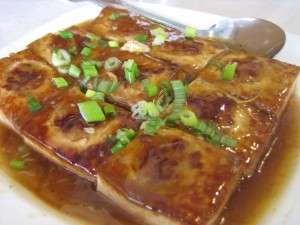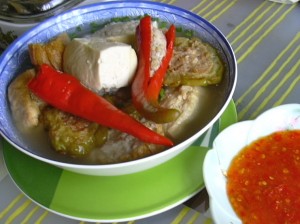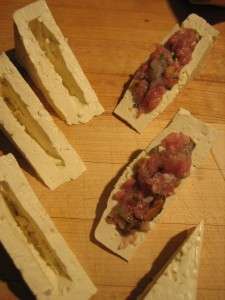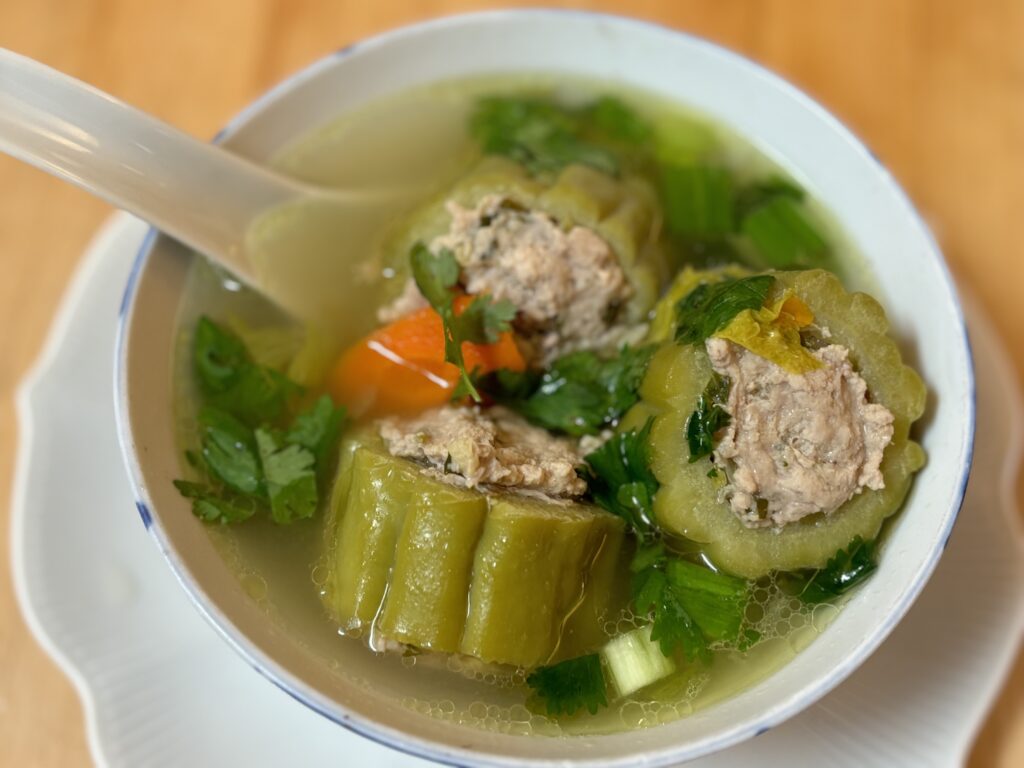
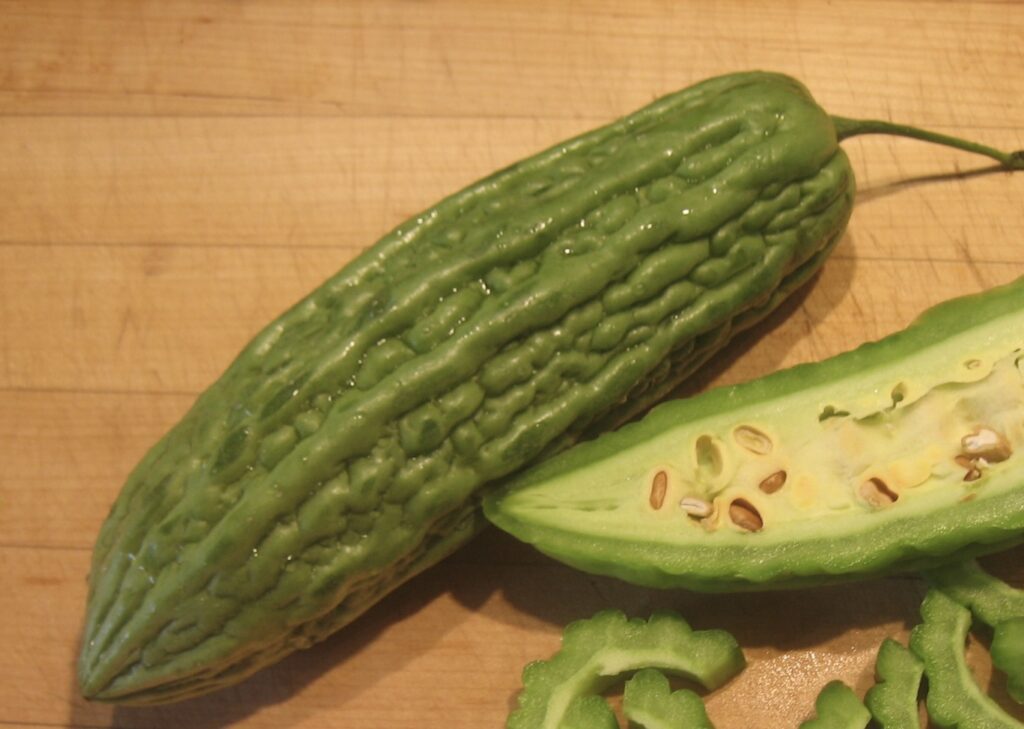
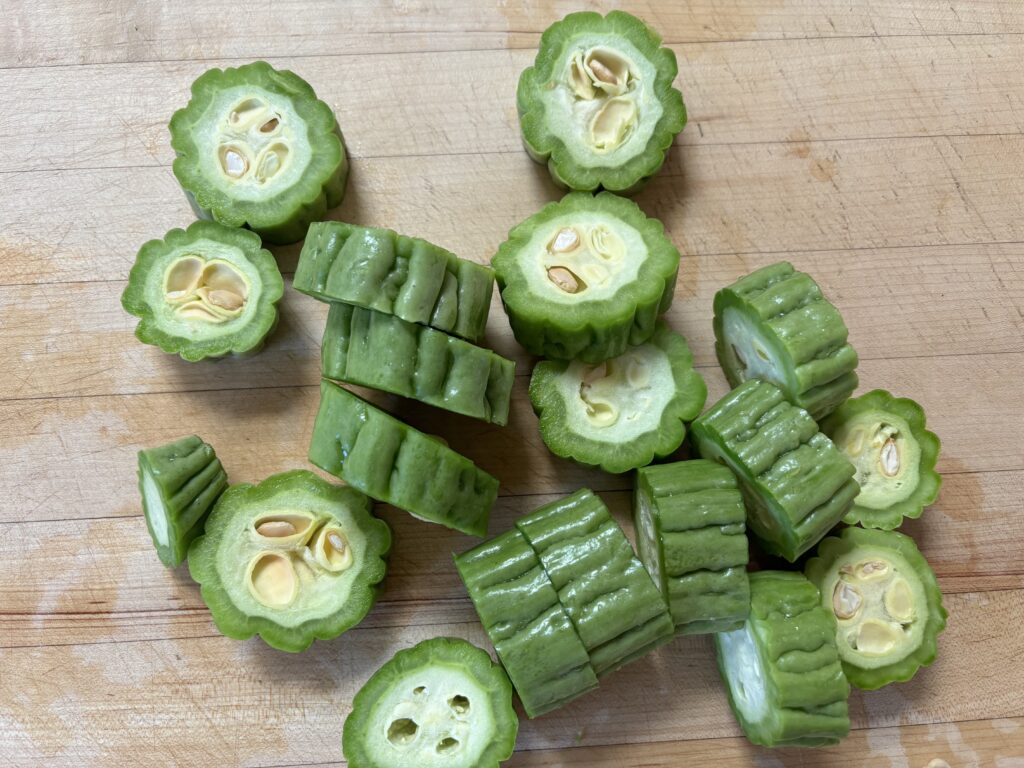
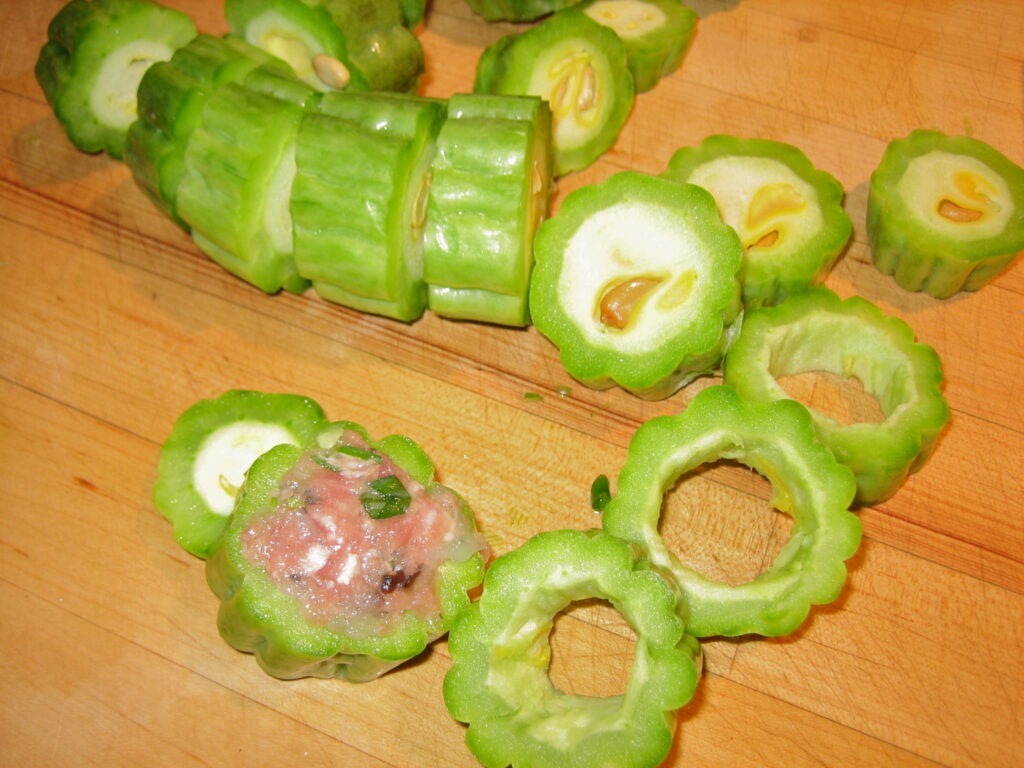
Summer brings bitter melon (foo gwa). We can find them at the Hmong’s stand at our farmers market. Their appearance prompts curious questions. They don’t look much like melons, their shape is more like a slender gourd or a plump cucumber. Their shiny bumpy skin is furrowed with deep wrinkles and their interior is filled with a white pithy mesh of seeds. Like their name implies, they are bitter. Although Hakka and many Asians love their strong numbing bite, it’s an acquired taste for many. Although I love bitter in many forms, I’ve find most times they are simply too bitter for me.
My father loved them so much that when he retired, he grew them in his garden. His recipe for the Hakka classic, stuffed bitter melon soup is on page 24 of The Hakka Cookbook.
My husband also loves bitter melon. Last weekend we bought two bitter melons at the market. I’m making his favorite, stuffed bitter melon soup tonight. I will use all pork for the filling, You can vary the filling to your taste. Many add some minced shrimp or fish to lighten it. I like to season the pork with some minced ginger, garlic, green onions, cilantro, soy sauce, shaoxing wine, salt, and pepper. Add some cornstarch to help bind it together. Slice the gourd crosswise into thick rings and scoop out the seeds. Pack the meat mixture into the bitter melon rings. then slide them into the simmering broth. Simmer the soup until the melon is tender. Tonight, I had some filling leftover so I dropped spoonfuls of the mixture into the broth. I also added some sliced carrots and celery to the soup because I had some in the refrigerator. Success! He ate three bowls.
Feeling adventurous? Give bitter melons a try.

